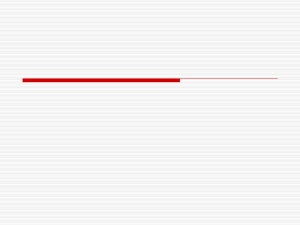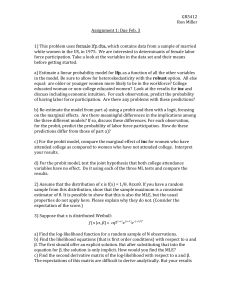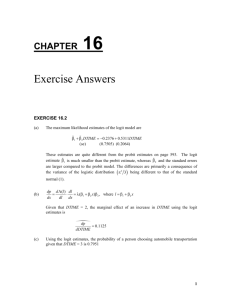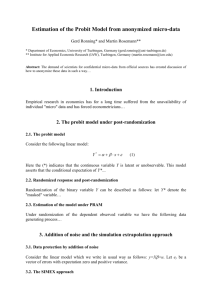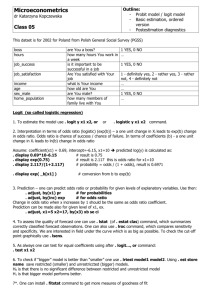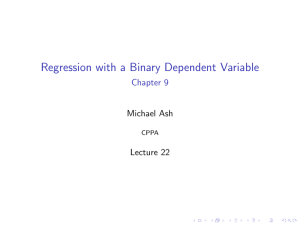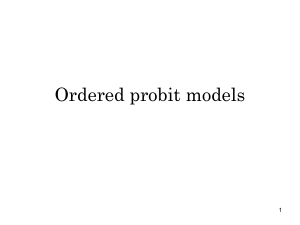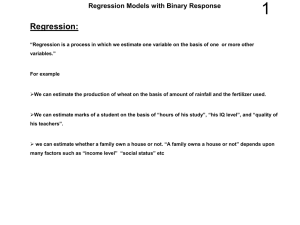Answer Key to Homework 8
advertisement
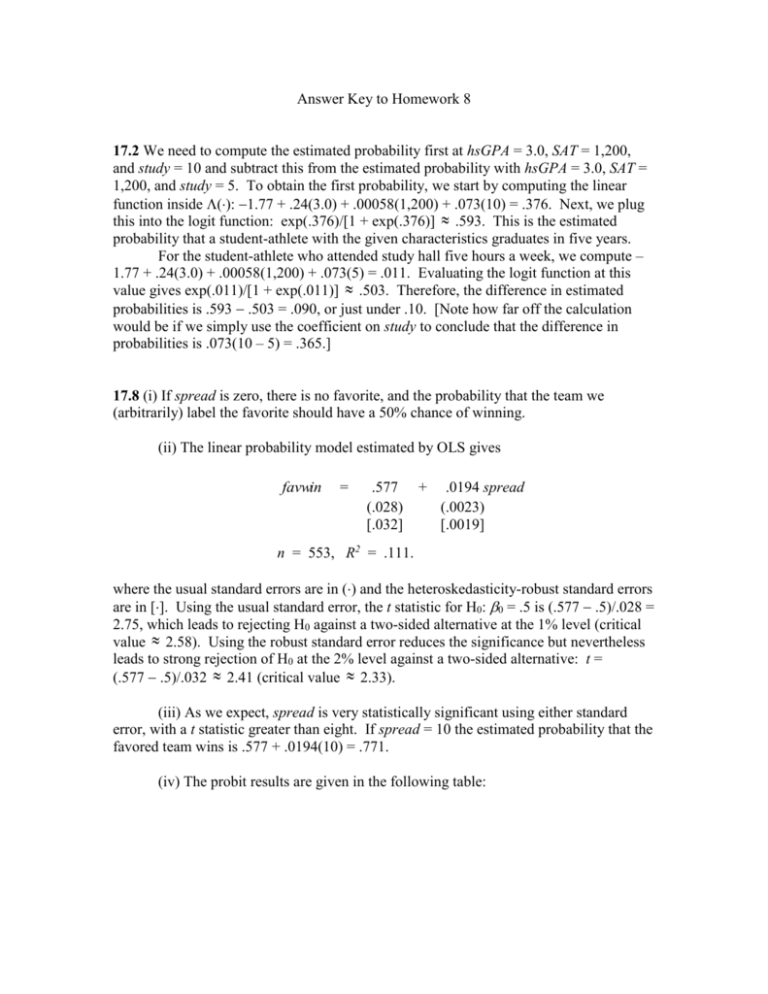
Answer Key to Homework 8 17.2 We need to compute the estimated probability first at hsGPA = 3.0, SAT = 1,200, and study = 10 and subtract this from the estimated probability with hsGPA = 3.0, SAT = 1,200, and study = 5. To obtain the first probability, we start by computing the linear function inside (): 1.77 + .24(3.0) + .00058(1,200) + .073(10) = .376. Next, we plug this into the logit function: exp(.376)/[1 + exp(.376)] .593. This is the estimated probability that a student-athlete with the given characteristics graduates in five years. For the student-athlete who attended study hall five hours a week, we compute – 1.77 + .24(3.0) + .00058(1,200) + .073(5) = .011. Evaluating the logit function at this value gives exp(.011)/[1 + exp(.011)] .503. Therefore, the difference in estimated probabilities is .593 .503 = .090, or just under .10. [Note how far off the calculation would be if we simply use the coefficient on study to conclude that the difference in probabilities is .073(10 – 5) = .365.] 17.8 (i) If spread is zero, there is no favorite, and the probability that the team we (arbitrarily) label the favorite should have a 50% chance of winning. (ii) The linear probability model estimated by OLS gives favwin = .577 (.028) [.032] + .0194 spread (.0023) [.0019] n = 553, R2 = .111. where the usual standard errors are in () and the heteroskedasticity-robust standard errors are in []. Using the usual standard error, the t statistic for H0: 0 = .5 is (.577 .5)/.028 = 2.75, which leads to rejecting H0 against a two-sided alternative at the 1% level (critical value 2.58). Using the robust standard error reduces the significance but nevertheless leads to strong rejection of H0 at the 2% level against a two-sided alternative: t = (.577 .5)/.032 2.41 (critical value 2.33). (iii) As we expect, spread is very statistically significant using either standard error, with a t statistic greater than eight. If spread = 10 the estimated probability that the favored team wins is .577 + .0194(10) = .771. (iv) The probit results are given in the following table: Dependent Variable: favwin Independent Variable spread Coefficient (Standard Error) .0925 (.0122) .0106 (.1037) constant Number of Observations Log Likelihood Value Pseudo R-Squared 553 263.56 .129 In the Probit model P(favwin = 1|spread) = (0 + 1spread), where () denotes the standard normal cdf, if 0 = 0 then P(favwin = 1|spread) = (1spread) and, in particular, P(favwin = 1|spread = 0) = (0) = .5. This is the analog of testing whether the intercept is .5 in the LPM. From the table, the t statistic for testing H0: 0 = 0 is only about -.102, so we do not reject H0. (v) When spread = 10 the predicted response probability from the estimated probit model is [-.0106 + .0925(10)] = (.9144) .820. This is somewhat above the estimate for the LPM. (vi) When favhome, fav25, and und25 are added to the probit model, the value of the log-likelihood becomes –262.64. Therefore, the likelihood ratio statistic is 2[262.64 – (263.56)] = 2(263.56 – 262.64) = 1.84. The p-value from the 32 distribution is about .61, so favhome, fav25, and und25 are jointly very insignificant. Once spread is controlled for, these other factors have no additional power for predicting the outcome.
